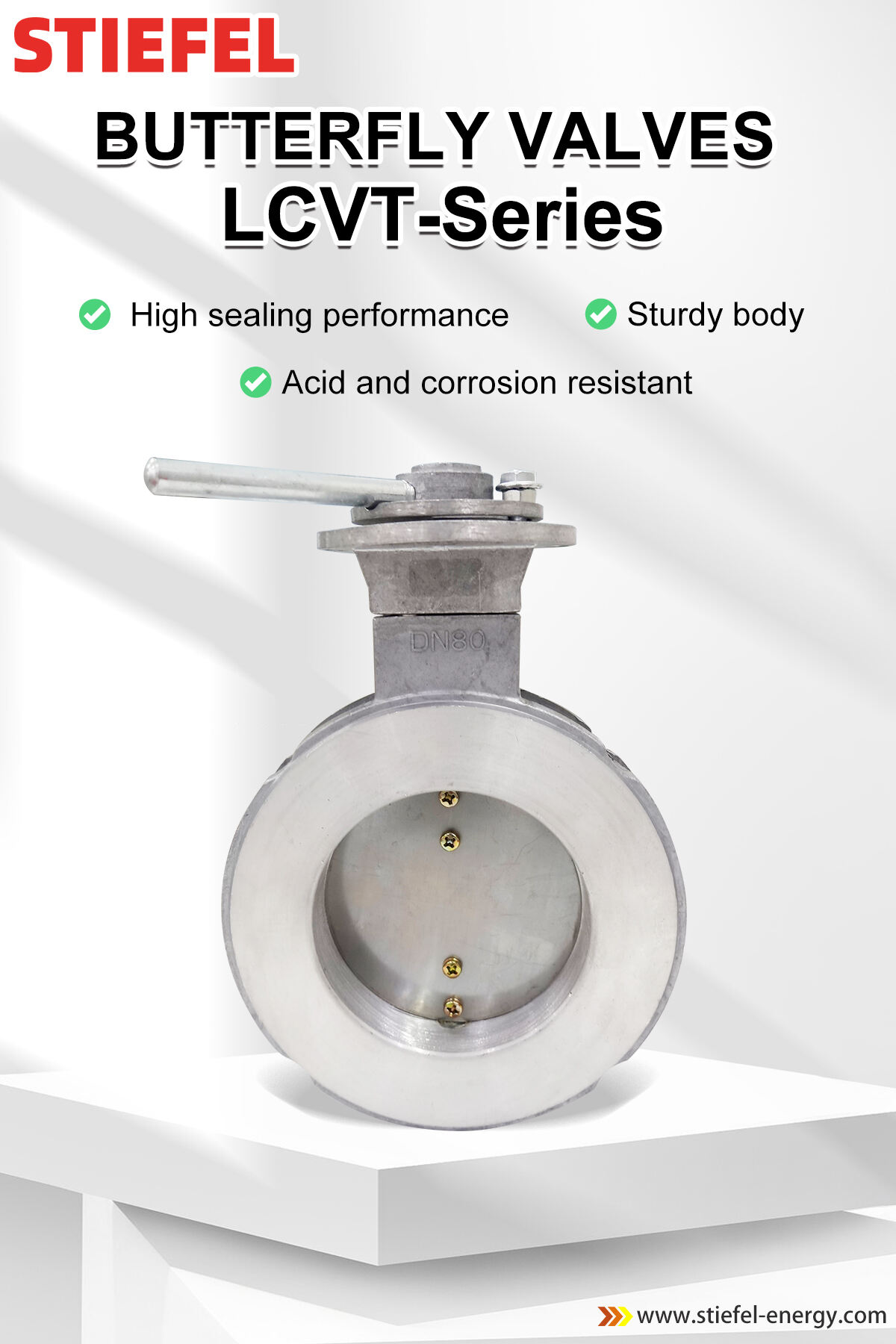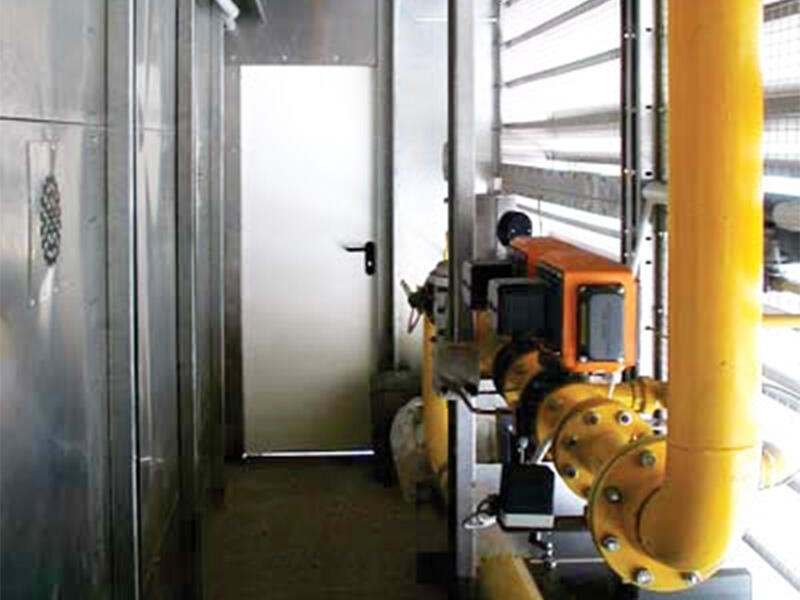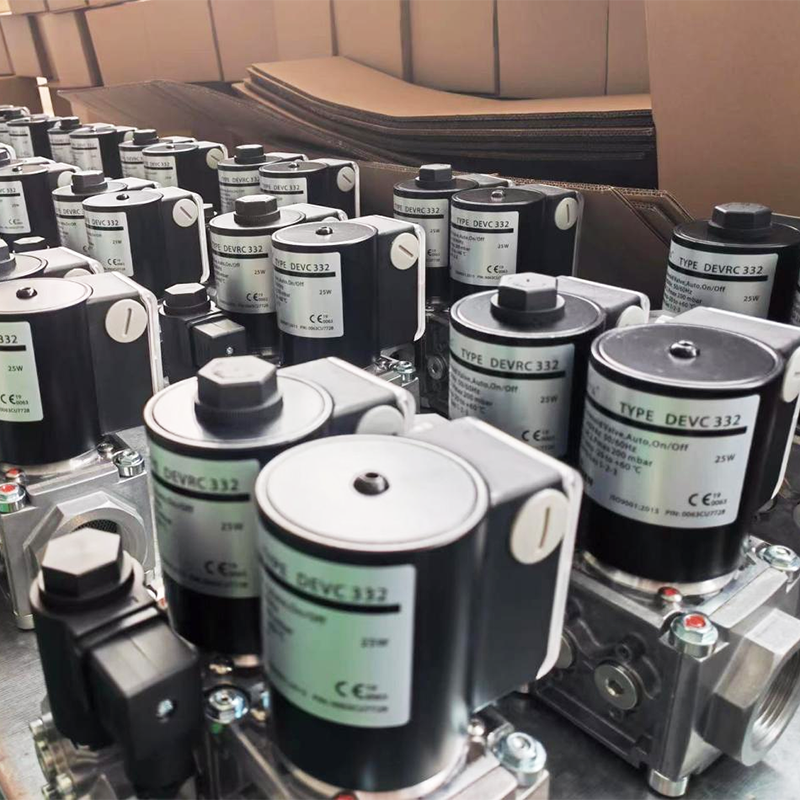How Butterfly Valves Work and Their Key Design Variations in Gas Systems
Working Principle of Butterfly Valves in Gas and Fluid Flow Control
Butterfly valves work by controlling gas flow through a disc that spins around a central shaft. When fully open, this disc lines up with the direction of flow, which cuts down on resistance and keeps pressure losses to a minimum. Turning the handle just 90 degrees swings the disc across the flow path, pressing it against rubber-like seals to create an instant shut off. The simplicity of this design is why these valves are so popular for emergency cutoff situations in pipeline systems that typically run at pressures below 150 psi according to Delco Fluid's latest specs from 2024.
Types of Butterfly Valves: Wafer, Lug, and Eccentric Designs for Different Gas Applications
Three primary designs are used in gas systems:
- Wafer valves fit between flanges and rely on pipeline compression for sealing—ideal for low-to-medium pressure natural gas lines.
- Lug valves include threaded inserts that allow bolting directly to flanges, enabling removal without shutting down the entire system.
- Eccentric valves, including double and triple-offset types, use an offset stem to lift the disc off the seat during operation, reducing wear in high-cycle throttling applications.
According to a 2024 Valve Material Study, wafer-style valves account for 62% of gas pipeline installations due to their cost efficiency and bidirectional sealing.
Disc Geometry and Sealing Technologies Affecting Throttling Performance
The shape of discs and what they're sealed with really matters for how well they perform. Studies show convex edges on discs can boost throttling linearity quite a bit compared to flat ones, maybe around 30-35% according to Delco Fluid research last year. When it comes to seals, many manufacturers now use combinations of PTFE and metal in their dual-seal designs. These setups hold up pretty well across a wide temperature range, surviving everything from minus 40 degrees Fahrenheit all the way up to 600 degrees. Some newer elastomeric seals actually pass those strict API 598 zero leakage tests, but engineers still need to be careful about where they apply them since heat can become a problem in really extreme conditions.
Advantages of Butterfly Valves in Gas Pipeline Shutoff and Regulation
Compact, Lightweight, and Cost-Effective Design for Large-Diameter Gas Lines
Butterfly valves take up about 60% less room than traditional gate valves according to Fluid Control Research from 2023, which makes them really good choices for big diameter gas lines where space matters a lot. The polymer reinforced body construction cuts down on structural weight by around 45% when compared to ball valves something pipeline engineers have confirmed through their field work over the years. When dealing with pipes larger than 24 inches in diameter, all these advantages start adding up financially too. Most companies report saving between 20 and 35% on materials costs just from switching to this type of valve system.
Ease of Installation and Maintenance Compared to Ball and Globe Valves
Installation is 50% faster than globe valves due to simple flange alignment and minimal hardware. Bidirectional seals allow seat replacement without disassembling adjacent piping—a benefit observed across 12 natural gas facilities in industrial audits. Field data also shows a 40% reduction in work-hour incidents during maintenance compared to ball valve retrofits.
Fast Shutoff Capability and Performance Advantages in Emergency Scenarios
A quarter-turn actuation enables full closure in under 3 seconds during pressure surges, outperforming gate valves by 8 seconds (API 598 Emergency Response Trials 2023). This rapid response prevents 92% of secondary failures in gas leak events, according to NTSB pipeline incident reports.
Manual, Pneumatic, and Electric Actuation Methods for Precise Gas Flow Management
There are basically three ways to operate butterfly valves. For systems that don't need frequent adjustments, manual actuators work fine in smaller installations where operators can physically turn them when needed. Pneumatic versions rely on compressed air supply and typically complete their 90 degree rotation within two seconds flat, which makes them great choices for locations that require quick shut off capabilities from afar or during emergencies. Electric models stand out because they offer really fine control down to about 0.1 degree increments, perfect for those situations where precise flow regulation matters most. These electric actuators usually come equipped with brushless DC motors that manufacturers claim should last well beyond ten thousand hours straight running time without needing replacement.
Integration with SCADA and Industry 4.0 Systems for Real-Time Monitoring
Modern butterfly valves increasingly integrate with SCADA networks, enabling real-time monitoring of valve position, torque, and flow rates. Networked systems reduce emergency response times by 37% compared to manual oversight (2024 Industrial Automation Report). IoT-enabled actuators now support predictive maintenance through embedded sensors that detect vibration, seal wear, and misalignment.
Response Time, Reliability, and Fail-Safe Mechanisms in Automated Setups
Safety features are absolutely essential when dealing with gas systems. When there's a drop in pressure, pneumatic actuators kick into action and move to a safe position within about 1.5 seconds. The spring-return mechanism does an even better job closing valves quickly in emergency situations, typically shutting them down in around 0.8 seconds flat. For those really tough scenarios where multiple failures happen at once, triple-redundant control systems keep everything running smoothly with response times staying below 50 milliseconds even if communications get disrupted somehow. And let's not forget about fire safety standards either. Systems need to pass rigorous testing according to API 607 and API 6FA requirements to prove they can continue operating reliably for at least half an hour straight at temperatures reaching up to 1,500 degrees Fahrenheit.
Performance Limitations and Suitability of Butterfly Valves in Critical Gas Applications
Throttling Accuracy and Flow Regulation Capabilities Under Varying Pressure Conditions
Butterfly valves offer moderate throttling precision with ±5—10% flow control under stable pressures. However, performance declines significantly above 50 psi differentials. The disc’s presence disrupts laminar flow, creating uneven torque demands that limit suitability for precision applications like natural gas compressor stations.
Challenges in High-Pressure, High-Temperature, and Precision Control Environments
Most standard butterfly valves work well under conditions below 1,480 psi (Class 900 rating) and temperatures around 400 degrees Fahrenheit. But when we get into really tough environments like sour gas processing plants where pressures can go over 25,000 psig and temps hit 800 degrees F, seal problems start becoming serious issues. These valves aren't built for that kind of punishment. Compared to full bore ball valves, there's this uneven flow pattern around the disc that just speeds up wear and tear in those fast moving gas streams. Maintenance teams at LNG facilities report having to service these valves every three months in about 78 percent of cases according to recent industry data from last year's valve performance study.
Flow Coefficient (Cv) and Turndown Ratio Data for Mid-Range Industrial Systems
| Parameter | Wafer-Style (8") | Triple-Offset (12") | Performance Threshold |
|---|---|---|---|
| Cv Value | 2,800 | 5,200 | 30% drop at 85% open |
| Turndown Ratio | 25:1 | 50:1 | <15:1 unusable |
| Max Pressure | 250 psig | 1,450 psig | ANSI Class 1500 |
These metrics confirm optimal performance in mid-pressure compressed air systems (50—800 psig), while eccentric designs are better suited for fuel gas blending with variable demand.
Debating the Role of Butterfly Valves as Primary Control Valves in Gas Systems
Even though they save money, about 62 percent of process engineers according to Ponemon's research from last year still mostly use butterfly valves for backup shutdowns in important systems because the seals tend to fail when temperatures change repeatedly. The newer triple offset design does fix around 89% of those pesky methane leaks during transport, but there's a problem with how fast they react. These valves take between 0.8 and 1.2 seconds to respond, which is way slower than the 0.3 seconds globe valves need. That difference matters a lot in situations where safety systems rated SIL-3 need to shut down emergencies quickly.
Selecting the Right Butterfly Valve for Gas Type, Pressure, and Environmental Conditions
Material and Seal Compatibility with Natural Gas, CO₂, Steam, and Corrosive Gases
Choosing the right materials depends on what kind of gases we're dealing with and how extreme the operating conditions get. EPDM seals work pretty well for natural gas installations and water systems when temperatures stay within the range of minus 40 degrees Fahrenheit all the way up to 300 degrees Fahrenheit, which is roughly equivalent to minus 40 Celsius to around 149 Celsius. For those situations involving steam or acidic substances, PTFE liners can take the heat up to nearly 450 degrees Fahrenheit, making them suitable for many industrial applications where standard materials would fail. When working in really harsh environments such as chlorine processing plants, engineers often turn to stainless steel discs combined with nickel aluminum bronze shafts because these combinations stand up better against chemical corrosion over time. According to recent research from the Fluid Control Institute published last year, getting the material combinations right actually cuts down seal failures by almost two thirds compared to mismatched components.
| Material | Best For | Temp Range | Pressure Limit |
|---|---|---|---|
| EPDM | Natural Gas, Water | -40°F to 300°F | 150 psi |
| PTFE | Steam, Acids | -100°F to 450°F | 285 psi |
| 316 Stainless | CO₂, Chlorine | -425°F to 1200°F | 600 psi |
Pressure Class Ratings (ANSI) and Application-Specific Suitability
ANSI Class 150 valves are sufficient for HVAC and low-pressure gas transfer (£275 psi), whereas Class 600 models support compressor stations requiring containment up to 1,440 psi. Engineers should apply higher safety margins—especially in hydrogen systems, where molecular size increases leakage risk, warranting a 20% margin above standard requirements.
Environmental Resilience: Fire-Safe Designs, Fugitive Emissions, and Outdoor Durability
Triple-offset metal-seated valves comply with API 607 fire-safe standards, maintaining sealing capability at 1,400°F (760°C) for 30 minutes. Outdoor units benefit from UV-stabilized EPDM seals and epoxy-coated bodies, which cut weather-related failures by 81% versus standard versions. For fugitive emissions control, ISO 15848-1 testing ensures compliance in GHG-intensive sectors like methane transport.
Industry Applications: Oil & Gas, Power Generation, and Water Treatment Case Insights
In LNG terminals, cryogenic butterfly valves with extended bonnets operate reliably at -320°F (-196°C). Power plants deploy high-performance variants for steam bypass control, achieving 98.6% shutoff accuracy. Municipal water systems using NSF-certified valves report 42% fewer maintenance issues than non-compliant alternatives (Water Infrastructure Report 2024).
FAQ
What is the primary function of a butterfly valve in gas systems?
The primary function of a butterfly valve in gas systems is to control the flow of gas by rotating a disc inside the valve, allowing for quick shutoff or regulation of the flow.
What are the different types of butterfly valves?
The main types of butterfly valves include wafer, lug, and eccentric designs. Each type is suited for different pressure and gas application scenarios.
How do butterfly valves compare with other valve types for large-diameter gas lines?
Butterfly valves are more compact, lightweight, and cost-effective compared to traditional gate or ball valves, making them ideal for large-diameter gas lines.
What materials are commonly used in butterfly valves for various gas types?
Materials such as EPDM, PTFE, and 316 stainless steel are used based on compatibility with specific gases like natural gas, CO₂, and steam, as well as the temperature and pressure conditions.
Can butterfly valves be used in high-pressure, high-temperature environments?
While some butterfly valves are suitable for moderate environments, they may not perform well under extreme high-pressure and high-temperature conditions commonly found in sour gas processing plants.
Table of Contents
- How Butterfly Valves Work and Their Key Design Variations in Gas Systems
- Advantages of Butterfly Valves in Gas Pipeline Shutoff and Regulation
- Manual, Pneumatic, and Electric Actuation Methods for Precise Gas Flow Management
- Integration with SCADA and Industry 4.0 Systems for Real-Time Monitoring
- Response Time, Reliability, and Fail-Safe Mechanisms in Automated Setups
-
Performance Limitations and Suitability of Butterfly Valves in Critical Gas Applications
- Throttling Accuracy and Flow Regulation Capabilities Under Varying Pressure Conditions
- Challenges in High-Pressure, High-Temperature, and Precision Control Environments
- Flow Coefficient (Cv) and Turndown Ratio Data for Mid-Range Industrial Systems
- Debating the Role of Butterfly Valves as Primary Control Valves in Gas Systems
- Selecting the Right Butterfly Valve for Gas Type, Pressure, and Environmental Conditions
- FAQ



